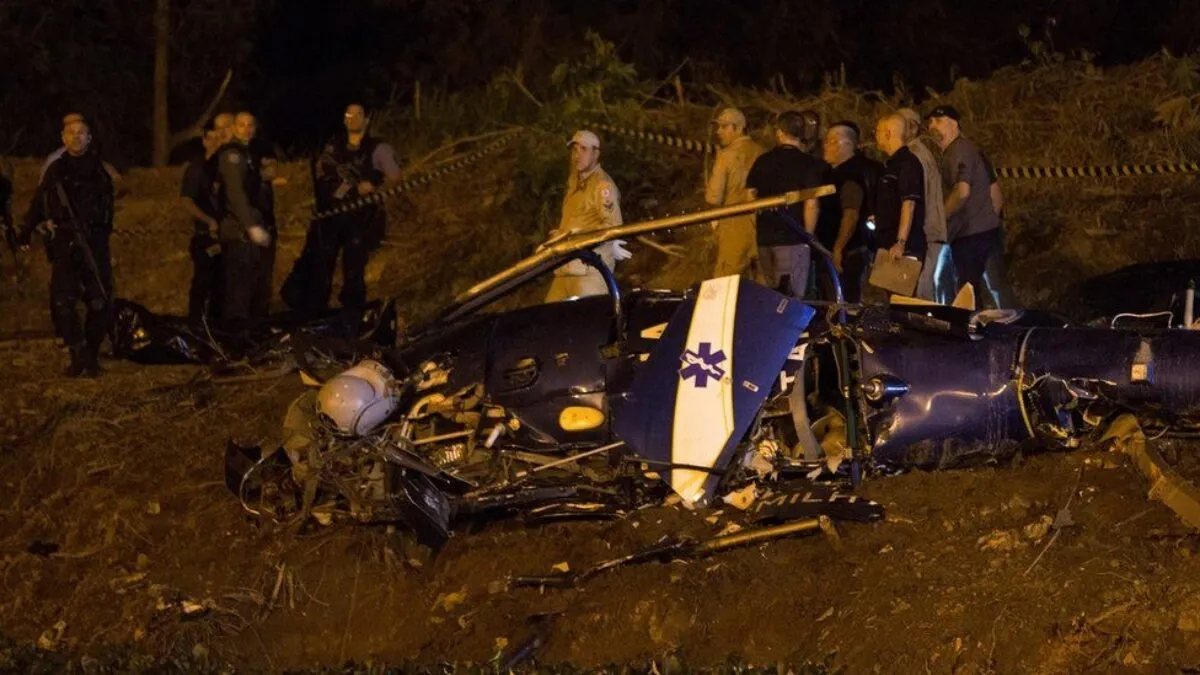Introduction
Helicopter crashes are distressing events that garner attention worldwide due to their significant impact on human lives, infrastructure, and aviation safety. Understanding the dynamics, causes, and aftermath of helicopter crashes is crucial for mitigating risks and enhancing safety measures in aviation operations.
Understanding Helicopter Crashes
Helicopter crashes refer to sudden, unplanned incidents resulting in the helicopter’s uncontrolled descent or impact with the ground or other objects. These events often lead to fatalities, injuries, and property damage, prompting thorough investigations to determine the underlying causes.
Causes of Helicopter Crashes
Helicopter crashes can occur due to various factors, including mechanical failures, adverse weather conditions, pilot error, and air traffic control issues. Mechanical failures such as engine malfunctions or structural defects pose significant risks, while adverse weather conditions like fog, thunderstorms, or strong winds can impair visibility and maneuverability, increasing the likelihood of accidents.
Impact of Helicopter Crashes
The impact of helicopter crashes extends beyond immediate casualties and damages, affecting families, communities, and the aviation industry as a whole. These incidents often raise concerns about safety protocols, regulatory compliance, and the reliability of aircraft systems, prompting comprehensive reviews and reforms to prevent future accidents.
Safety Measures and Regulations
To enhance helicopter safety, stringent safety measures and regulations are enforced by aviation authorities and regulatory bodies worldwide. These measures encompass rigorous pilot training, regular aircraft maintenance checks, adherence to flight protocols, and the implementation of advanced safety technologies to mitigate risks and ensure passenger welfare.
Helicopter Crash Investigations
Following a helicopter crash, thorough investigations are conducted by aviation experts, regulatory agencies, and law enforcement to determine the root causes and contributing factors. These investigations involve examining flight data, conducting forensic analyses, and scrutinizing maintenance records to identify any lapses or deficiencies in operational procedures.
Surviving a Helicopter Crash
Surviving a helicopter crash requires quick thinking, decisive action, and adherence to safety protocols. Passengers are advised to remain calm, fasten their seatbelts securely, and follow the instructions provided by the flight crew during emergency situations. Being familiar with emergency exits and evacuation procedures can significantly improve survival chances in critical situations.
Emergency Response to Helicopter Crashes
Efficient emergency response mechanisms are vital for mitigating the consequences of helicopter crashes and ensuring prompt medical assistance to survivors. Emergency services, including fire departments, medical personnel, and law enforcement agencies, collaborate to secure the crash site, rescue passengers, and provide medical treatment to those in need.
Helicopter Crash Statistics
Helicopter crash statistics reveal valuable insights into accident trends, frequency, and contributing factors, enabling stakeholders to implement targeted interventions and safety initiatives. Analyzing crash data helps identify patterns, assess risk factors, and prioritize resource allocation for accident prevention and response efforts.
Case Studies of Notable Helicopter Crashes
Studying case studies of notable helicopter crashes provides valuable lessons and insights into accident dynamics, human factors, and systemic vulnerabilities. Analyzing past incidents helps identify recurring themes, systemic failures, and opportunities for improving safety protocols, training programs, and regulatory frameworks.
Lessons Learned from Helicopter Crashes
Learning from past helicopter crashes is essential for enhancing safety awareness, fostering a culture of accountability, and preventing future accidents. Incorporating lessons learned into training curricula, operational procedures, and regulatory frameworks strengthens resilience and promotes continuous improvement in aviation safety standards.
Helicopter Crash Prevention Techniques
Implementing proactive helicopter crash prevention techniques involves a multi-faceted approach encompassing technological innovations, regulatory reforms, and industry-wide collaboration. Investing in advanced safety systems, conducting regular risk assessments, and promoting a culture of safety consciousness are integral to reducing the likelihood of accidents and enhancing passenger safety.
Future Trends in Helicopter Safety
The future of helicopter safety is shaped by ongoing advancements in technology, regulatory frameworks, and risk management strategies. Emerging trends such as automation, predictive maintenance, and enhanced pilot training hold promise for mitigating risks, improving operational efficiency, and ensuring safer skies for all stakeholders.
Conclusion
In conclusion, understanding the dynamics, causes, and implications of helicopter crashes is paramount for promoting aviation safety and mitigating risks in helicopter operations. By learning from past incidents, implementing proactive safety measures, and fostering a culture of accountability, stakeholders can work together to ensure safer skies and prevent future tragedies.


